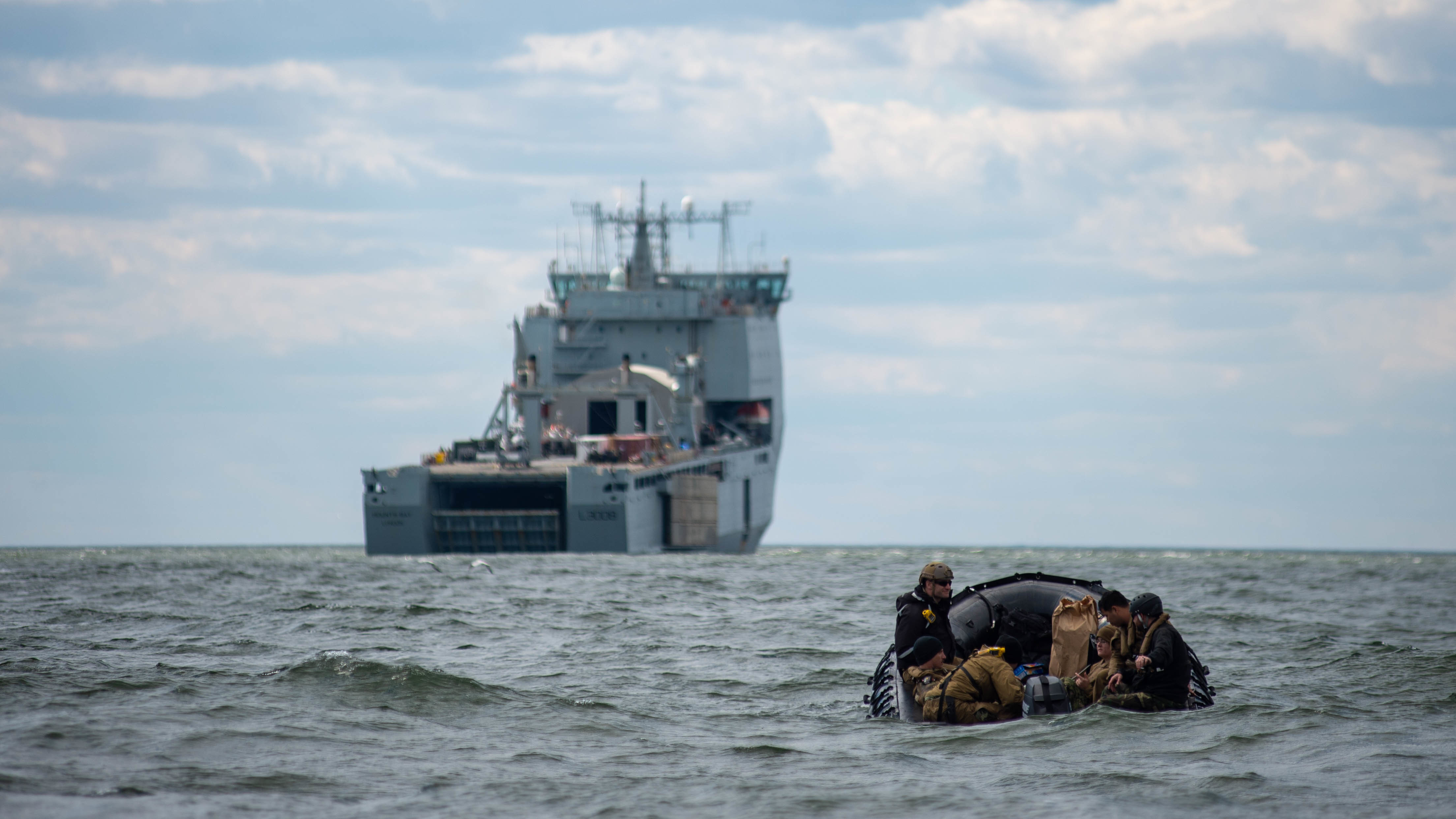
NAVAL STATION NORFOLK, ABOARD RFA MOUNTS BAY – The Navy’s mine countermeasures community brought all three legs of its triad together for a single experiment – aboard an allied ship – to see how well they could combine their gear and people to tackle a common threat.
Mine countermeasures work is conducted by three separate groups: Expeditionary MCM companies from the explosive ordnance disposal (EOD) community; helicopters carrying mine detection and neutralization systems; and ships, either the wooden MCM ships today or the Littoral Combat Ship and its MCM mission package in the future.
But if a dire situation emerged in the real world, could these three communities come together to clear a minefield?
That’s what the Navy recently tested, said Cmdr. Jon Haase, the commanding officer of EOD Mobile Unit 2 and the commander of the MCM Task Group during a recent exercise.
“MCM has traditionally been done by helicopters, it’s been done off of small boats and it’s been done with unmanned underwater vehicles before, but to embark all of those players onto one platform – an allied platform, nonetheless – and to integrate all those from a central hub and to deconflict all of them from one task group, I think, is the contribution” of this exercise, Haase told two reporters on March 25 aboard Royal Fleet Auxiliary landing ship dock RFA Mounts Bay (L3008).
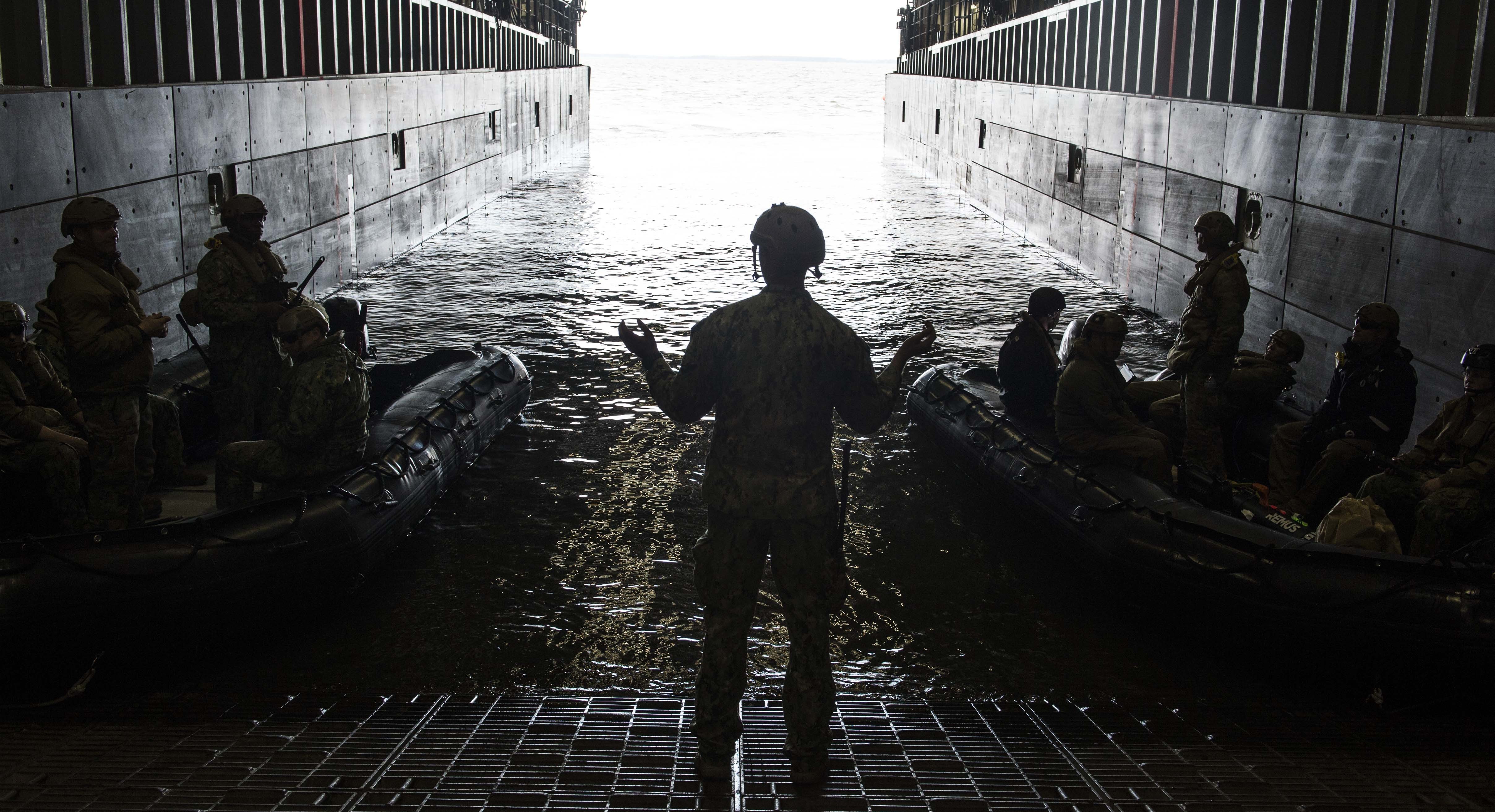
The exercise didn’t test the effectiveness of the systems to find mines, but rather tested whether a single task group could command and control all the people and platforms at once; whether the vehicles could be launched, recovered and operated together without getting in each others’ way; and whether their data could be combined into a single operating picture to allow the task group commander to make decisions about how to clear a minefield.
With helicopters trying to operate from the flight deck and two units trying to move their unmanned systems and boats around the well deck without slowing each other down or hurting any of the equipment – all while aboard a “vessel of opportunity” that they hadn’t worked with before – that was no small task.
“The complexities and the nuances of bringing those systems to an area to conduct mine countermeasures and back successfully – deconflicting the space on the deck, well deck, helo operations, personnel transfers, all the complexities that’s layered around having multiple systems and multiple units embarked – and our ability to successfully command and control that,” Haase said, were some of the challenges that the exercise proved the Navy could, in fact, overcome.
In addition to bringing all three triads of the MCM community together, the exercise was quite forward-looking in that it incorporated two unmanned systems that are not yet operated in the fleet but will be in the coming years: the Common Unmanned Surface Vehicle (CUSV) that will conduct mine hunting and sweeping missions, and the Knifefish unmanned underwater vehicle (UUV) minehunting system, both of which will be included in the LCS MCM mission package. These two systems were manned by personnel from LCS Squadron (LCSRON) 2 in Mayport, Fla.
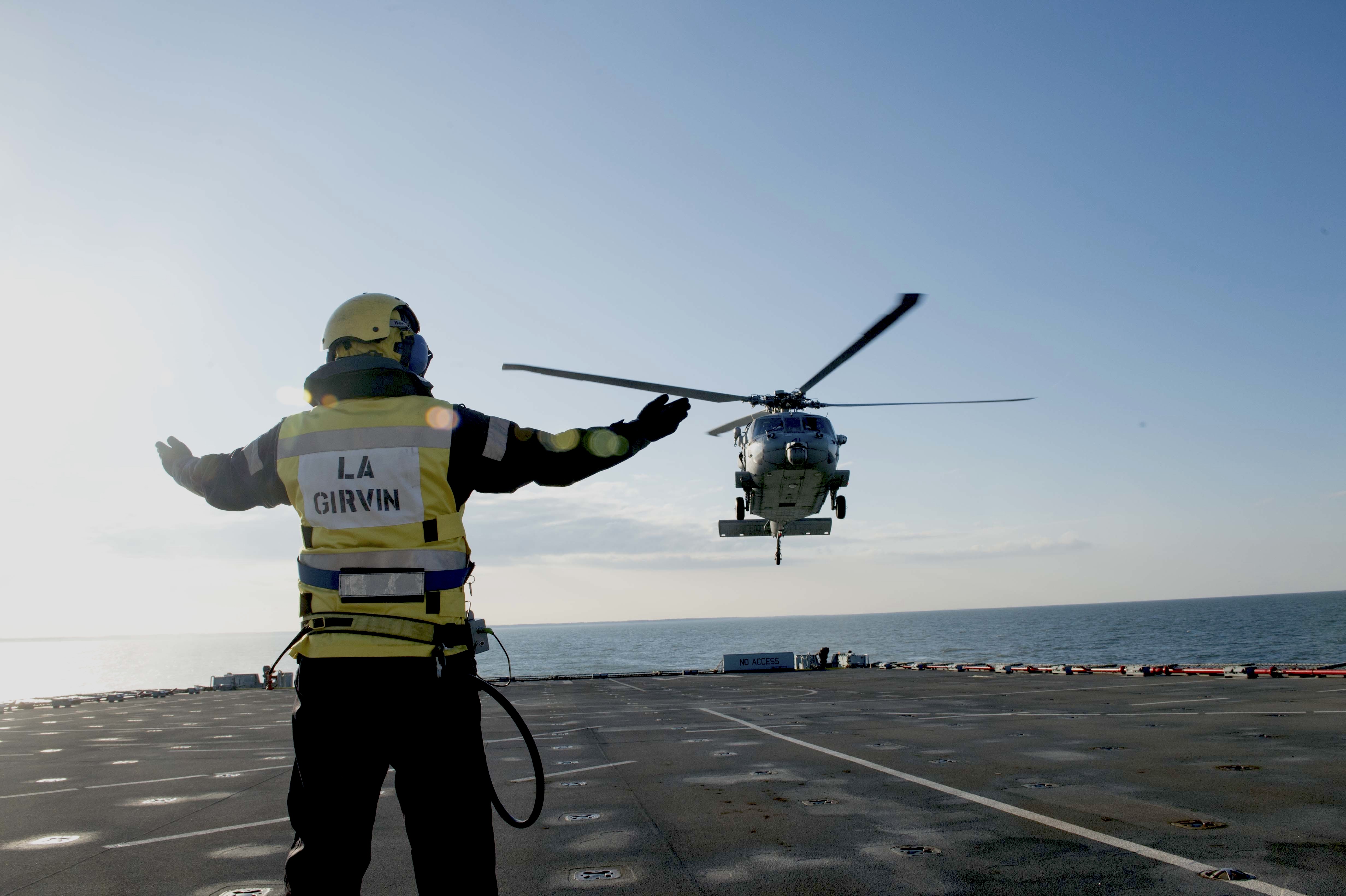
Helicopter Sea Combat Squadron (HSC) 2 and HSC-28, which fly the MH-60S Seahawk helicopter, also participated with the Airborne Laser Mine Detection System and the Airborne Mine Neutralization System, both of which are also part of the LCS MCM mission package.
And lastly, Haase’s EOD Mobile Unit 2 provided an expeditionary MCM company, which sends personnel out in small boats to operate the Mk 18 Mod 1 Swordfish and the Mk 18 Mod 2 Kingfish UUVs, and served as the task group leadership.
Conducting this exercise aboard an LCS or another U.S. warship would have been a challenge. Conducting aboard a British ship was a bigger challenge, but it also demonstrated that the two countries could come together if needed to clear the Persian Gulf or other bodies of water of mines.
The Falmouth, U.K.-based RFA Mounts Bay is a year and a half into a two-year deployment to the Caribbean and Western Atlantic to conduct humanitarian assistance during hurricane season and counter-narcotics operations during the rest of the year, Mounts Bay commanding officer Capt. Jed MacAnley said during the media event on his ship’s bridge. Bay-class ships – operated by the RFA, a civilian-crewed fleet similar to the U.S. Navy’s Military Sealift Command – have operated in the Middle East and done work with British MCM personnel and unmanned systems, which MacAnley got to observe during the planning phase of this exercise.
MacAnley said the American unmanned systems – and the CUSV in particular – were larger than any equipment he had worked with on Mounts Bay. That meant they required a little more thought from his crew, especially since, once they were loaded into the well deck in reverse order of how they would be launched back out, it was hard or impossible to start moving them around to rearrange them.
“That gave us just a little bit more challenge to make sure that we got the right things in the right place, because once you’ve got it set it’s very difficult to start swapping around,” he said.
“Even though we’ve got a big deck out there, there just isn’t spare space to swap things around as you might want to.”
Proving the pairing of a Bay-class ship and U.S. MCM systems and notating best practices and limitations means that, if mines were laid and U.S. and British forces had to respond, those units would already have a head start on knowing how to operate together, saving time and allowing them to start the mission faster.
As an operator and commander, Haase said, “I think this gives me flexibility, because I now know that if I were deployed forward and I had a certain mix of these assets, I’m ready to go on a Bay-class ship and have full confidence that we can execute our mission successfully. And the more times we do events like this on different ships, as an operational commander, I would feel more comfortable and confident in having flexibility.”
The sheer mix of MCM assets from across the triad also provided flexibility, he added.
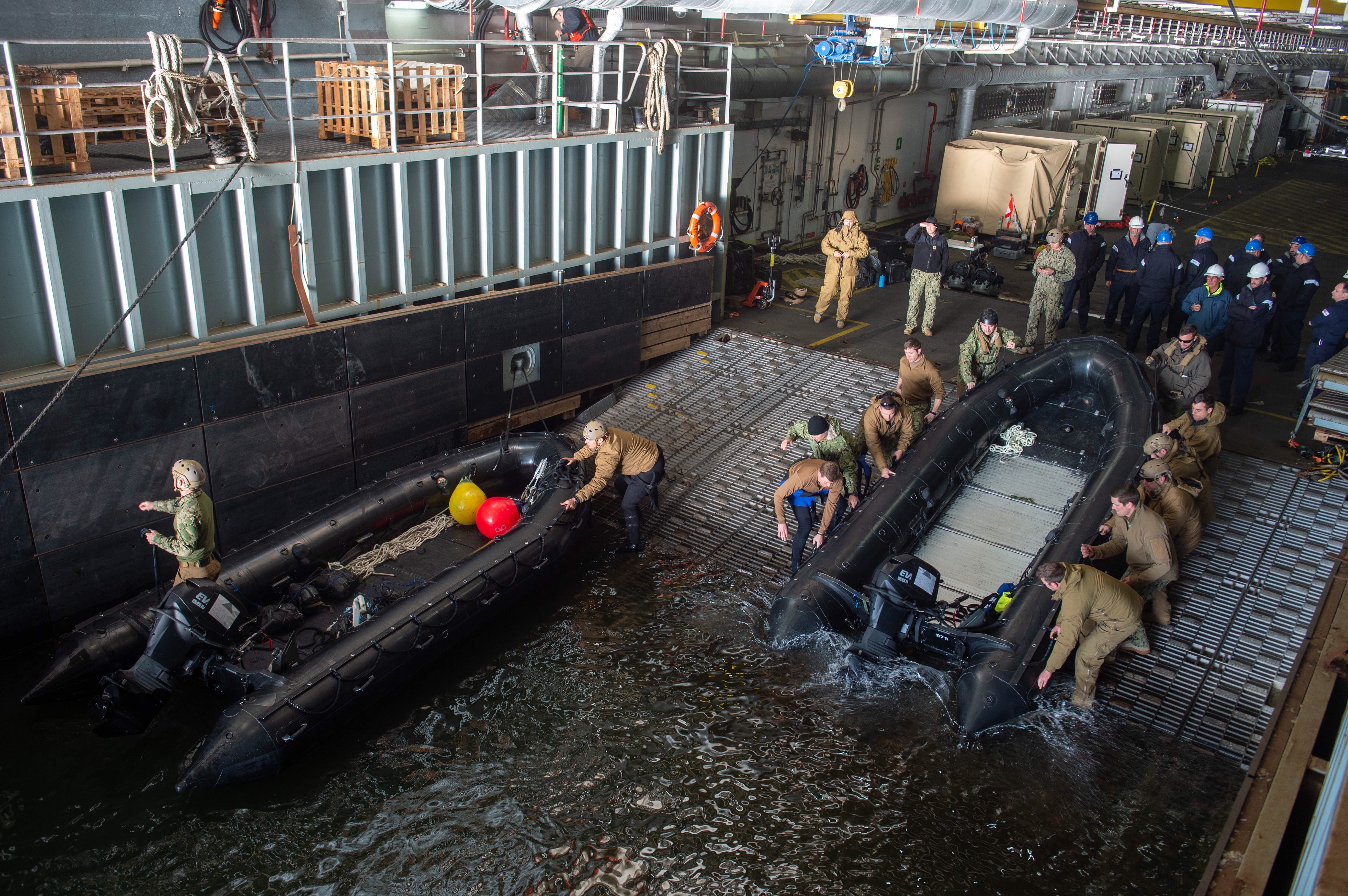
“On a day when the weather was awful, so bad we couldn’t put any of the vessels in the water because the sea state was too dangerous for them to be either on the water or be recovered and launched safely, the aircraft were great. No restrictions. They went out and operated,” Haase said, noting the second day of the exercise was the bad-weather day.
“And aircraft have their moments as well, and in those cases having other platforms that could operate either autonomously or with small vessels operating here provided us flexibility to operate and to be able to press forward when we traditionally wouldn’t have been.”
Haase and MacAnley said their teams spent several months ahead of time learning about each other, how big the unmanned systems were, how they could be stored aboard the RFA ship, whether the UUVs’ lithium-ion batteries could be safely stored, whether the ship had the right kind of fuel for American helicopters and boats, and so on. Despite the detailed planning, both officers said they still found themselves zip-tying additional antennas to the ship to support communications and facing a few surprises when they finally headed out to sea together in Norfolk.
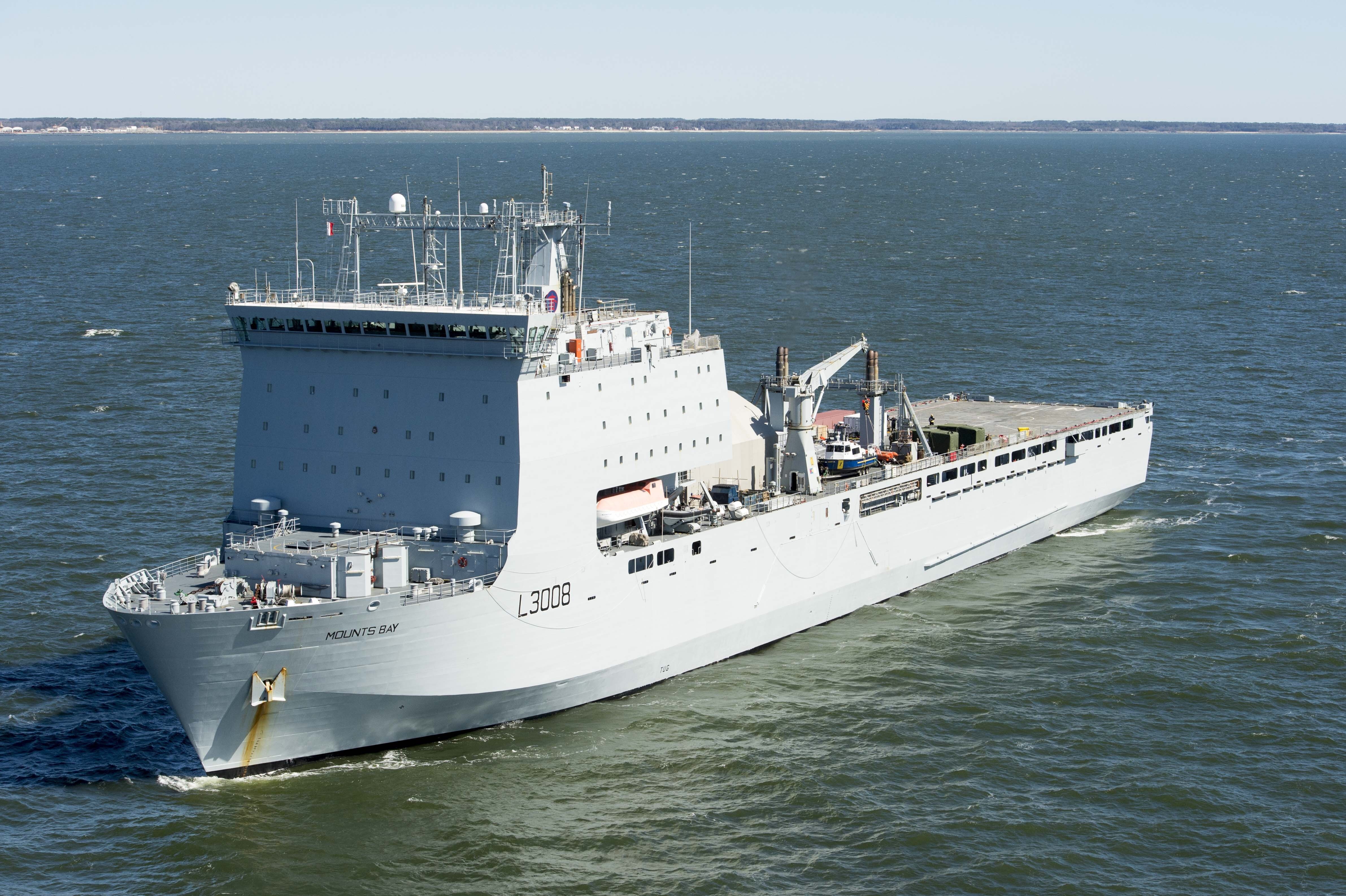
“There were still moments where it was time to lift this one piece that had to be lifted, but now we realized it would need to be turned, and then the clearances were a little closer than we thought but still safe, and the ship’s boatswain was out there checking the wind as we were going and you had to keep your eye on the seas,” Haase said with a chuckle.
“That’s the point of an experiment: you’re going to learn things you hadn’t encountered before, and the ship was just unbelievably proficient and helpful when we came to that moment where we weren’t sure – because we don’t use the cranes like that, we’re not as skilled at maneuvering around the deck as they are – we weren’t sure, hey is this going to work? And their boatswain would step in, and be like, I’d bet every paycheck I’ve ever had, this is going to work like a champ. We’re like, Boats, you got it. if you’re sure, we’re sure.”
“I would work with the RFA again in a heartbeat,” Haase added.





